This new creation could be the most valuable substance on Earth. Theoretical applications include superconductivity at room temperature, rather than extremely cold temperatures for superconductivity to operate. Other predictions have been made, such as a possible alternative energy source for many uses including as a powerful propellant in rocketry, and improving overall electronics.
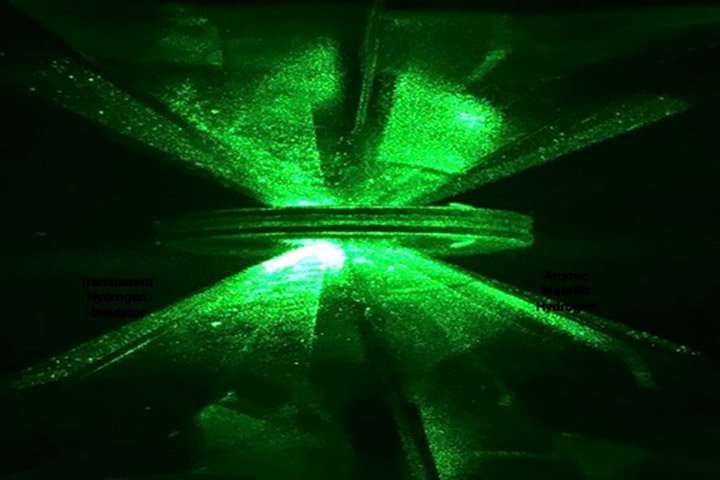
Diamond anvils compressing molecular hydrogen.
Science published the paper today, January 26th, wherein Thomas D. Cabot, Isaac Silvera and Ranga Dias described creating this rare material. This material has been on many minds for almost a century. It was first theorized by Wigner and Huntington in 1935, and scientists have been working on trying to create it for over 40 years.
SMH is the rarest item on earth, as the first ever sample was created by this team. Silvera say "It's the first-ever sample of metallic hydrogen on Earth, so when you're looking at it, you're looking at something that's never existed before."
There are two ways to make solid metallic hydrogen (SMH). The first way is by increasing pressure at low temperatures. The second way is by increasing temperatures until it enters plasma phase transition. The scientists created it with the first method in a diamond anvil cell (DAC) formed with two small pieces of polished synthetic diamonds that were treated to make them even stronger. A 5 micron thick layer of diamond was shaved off and an thin layer of alumina was added to prevent the hydrogen from making the diamond more brittle and prone to weaken or brake.
A tiny sample of hydrogen made solid by super cooling it, was squeezed at 495 gigpascals (GPa). That's equivalent to 71.7 million pounds per square inch (psi). That's more pressure than there is at the center of the earth. Solid molecular hydrogen breaks down the molecular bonds to transform into atomic hydrogen as a metal.
Photographs of different phases of transition at different stages of compression were taken using an iPhone camera placed at a modified stereo microscope.
The first phase in the picture below, at 205 to 335 GPa, shows the hydrogen is transparent.
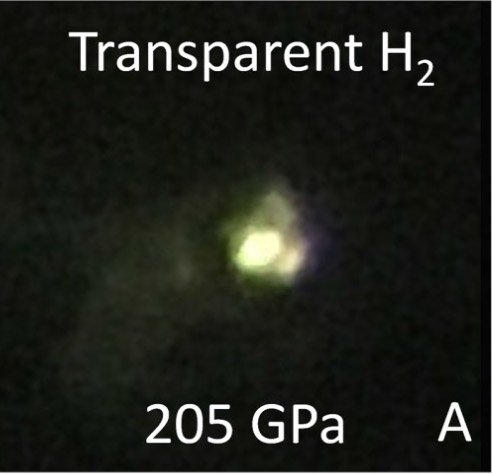
source
The second phase of compression is black and has bright areas due to the LED illumination.
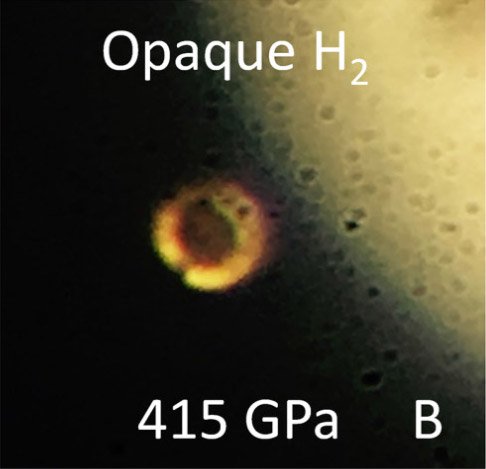
source
Once the sample reaches 495 GPa, metallic hydrogen forms.
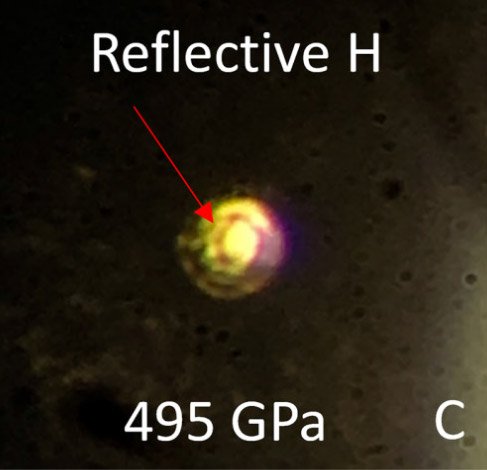
source
Here is a phase diagram of what happens to the hydrogen sample as it traditions to solid metal hydrogen.
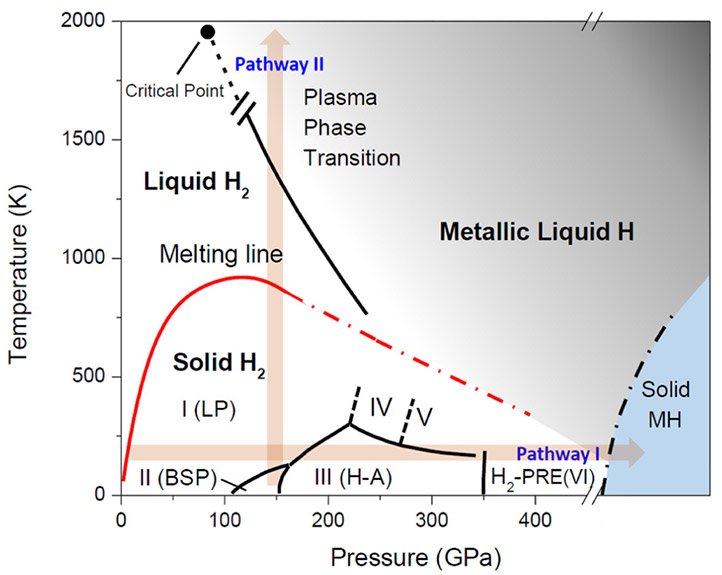
source
Current methods of transporting electricity results in a 15% energy loss during transmission. If solid metal hydrogen could be made into wires, then this could revolutionize our use of energy. Transportation systems like magnetic levitation would be more feasible, as well as electronic cars and other devices becoming more efficient. Rocket propulsion would go from 450 second to 1,700 seconds, which would allow us to travel to nearby planets.
All of these possibilities might never happen though. For now they're only able to have it exist at high pressure in a diamond anvil. It might be possible, but even if it isn't, this discovery is still important to scientific achievement
References:
- Hydrogen turned into metal in stunning act of alchemy that could revolutionise technology and spaceflight
- Observation of the Wigner-Huntington transition to metallic hydrogen
- Metallic hydrogen, once theory, becomes reality
- Metallic hydrogen finally made in lab at mind-boggling pressure
- It's real: Metallic hydrogen has been created for the first time
If you appreciate and value the content, please consider:
Upvoting  , Sharing
, Sharing  or Reblogging
or Reblogging  below.
below.
@krnel
2017-01-26, 7:47pm

